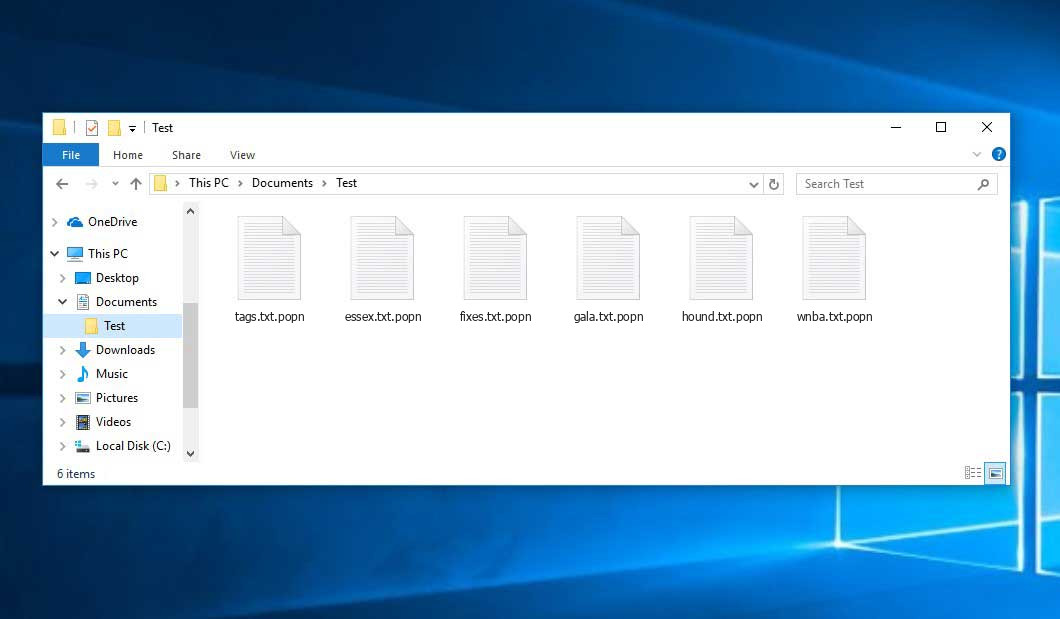The Popn virus, is a ransomware infection that belongs to the STOP/Djvu family. This malicious program is known for file encryption and ransom demands. Once the Popn virus infects a computer, it finds videos, photos, documents, and more, in order to encrypt them. This malware modifies the file structure, making it inaccessible in a regular way. To distinguish encrypted files, it appends the .popn extension to such files.
What Is Popn Virus?
Popn
🤔 Popn malware can be classified as ransomware that originates from the DJVU/STOP family. Its main target is to encrypt files that are important to you. Then, ransomware virus asks its victims to pay the ransom – ($490 – $980) in Bitcoin.
The Popn virus is a malware that encrypts your files and asks to pay for their recovery. This ransomware encrypts a wide selection of file types. You can see the encrypted files by a “.popn” extension at their end. Affected files become impossible to access and use in a common way. Then, this ransomware spawns a “_readme.txt” file which contains ransom demands. This file commonly contains a contact email and a Bitcoin wallet address.
Popn Ransomware works with Salsa20 encryption algorithms to cipher the targeted files. Since Popn virus uses such a robust ciphering method, it becomes particularly hard, if even possible, to find the decryption key without the assistance of the attackers.
Once the files are encrypted, the Popn virus displays a ransom note to the user, asking for a ransom payment for the decryption key. The ransom note contains instructions on how to make the payment and also often includes threats of data loss or increased ransom amounts if the demands are not met within a specified timeframe.
I have compiled a comprehensive list of potential solutions, advice, and methods to remove the Popn virus and recover access to your files. There are situations where it may be feasible to restore your files, but sometimes, it may be impossible.
📌 Important Reminder!
It is important to say that paying off the ransom does not guarantee the successful files recovery. The rascals who stand behind the Popn virus are not trustworthy. There have been instances where people have paid the ransom, only to be denied by the cybercriminals with the decryption key provision.
Popn employs a unique key for each victim, with one exception:
- If Popn fails to establish a connection with its command and control server (C&C Server) before starting the encryption process, it resorts to using offline keys. An offline key is the same for all users, which allows for the decryption of files encrypted by the ransomware.
The Popn virus is similar to other DJVU ransomware samples such as Tasa, Taoy, Wsaz, and Wsuu. This virus encrypts a wide range of common file types and appends its distinct “.popn” extension to all files. For instance, a file named “1.jpg” would be altered to “1.jpg.popn” and “2.png” to “2.png.popn“. Upon successful encryption, the virus creates a special text file named “_readme.txt” and places it in every folder containing the encrypted files.
The image below provides a visual representation of files with the “popn” extension:
| Name | Popn Virus |
| Ransomware family1 | DJVU/STOP2 ransomware |
| Extension | .popn |
| Ransomware note | _readme.txt |
| Ransom | From $490 to $980 (in Bitcoins) |
| Contact | [email protected], [email protected] |
| Detection | Ransom:MSIL/Conti.MA!MTB, MSIL/Injector.VYF, Ransom:Win32/FileCoder.GJN!MTB |
| Symptoms |
|
| Fix Tool | To remove possible malware infections, scan your PC: 6-day free trial available. |
This message asking payment is for restore files via decryption key:
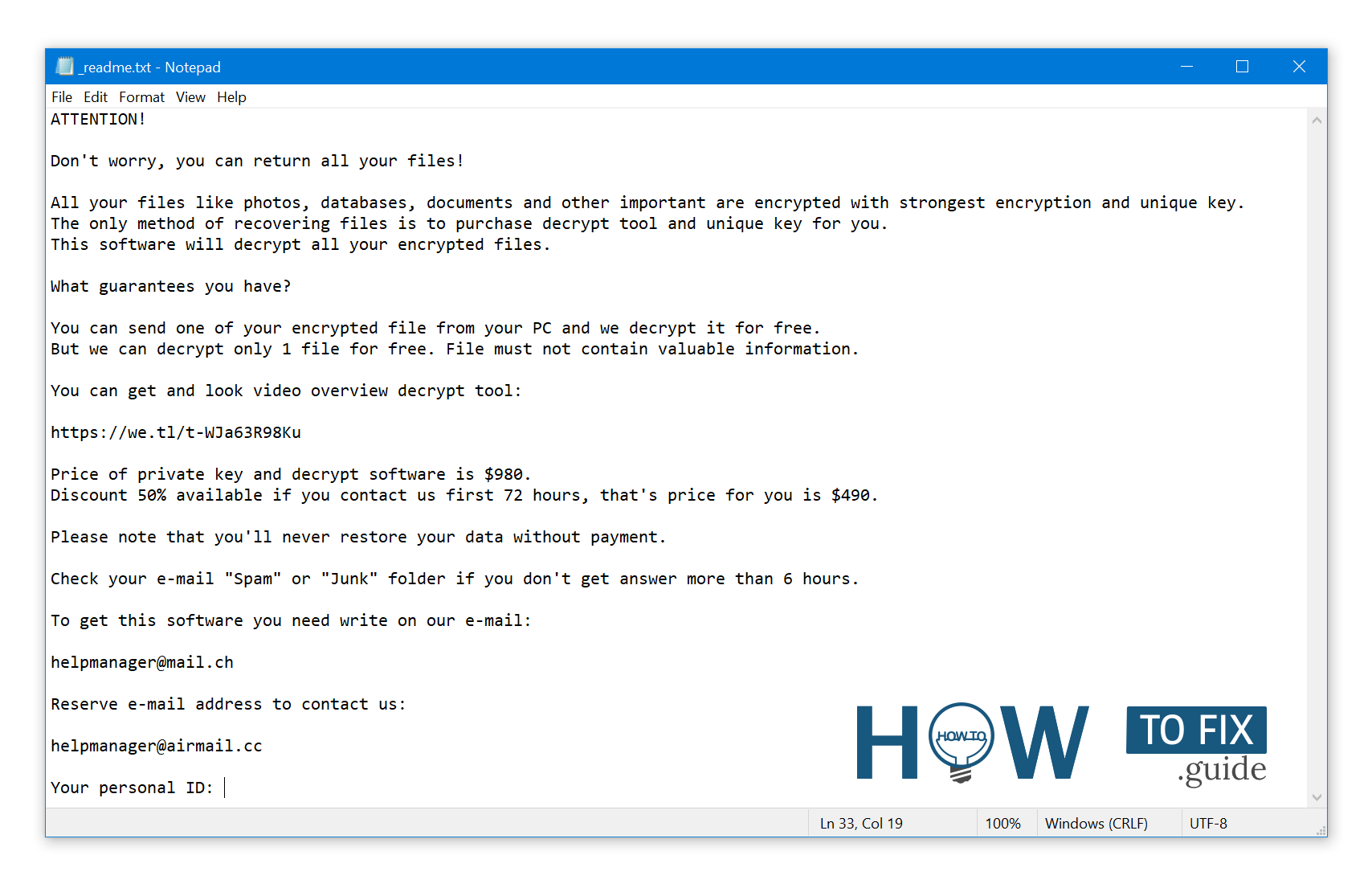
_readme.txt (STOP/DJVU Ransomware) – The alarming notification requesting users to pay off the ransom to unlock the encoded data contains these frustrating admonitions.
Popn ransomware arrives as a set of tasks that are meant to perform different functions on a victim’s computer. One of the initial ones being launched is winupdate.exe, a tricky process that displays a fraudulent Windows update prompt during the attack. Such a trick helps to convince the victim that a sudden PC slowdown is caused by a Windows update. But at the same time, the ransomware runs another process (which name commonly consists of 4 random characters) which starts scanning the computer for target files and encrypting them. Then the ransomware deletes Volume Shadow Copies from the system through the following CMD command:
vssadmin.exe Delete Shadows /All /Quiet
Once removed, it becomes virtually impossible to retrieve the previous computer state using System Restore Points. The problem is, ransomware operators are eliminating any built-in Windows methods that could aid the victim to restore files for free. In addition, the rascals modify the Windows HOSTS file by appending a list of domains to it and redirecting them to the localhost IP. As a result, the victim will encounter a DNS_PROBE_FINISHED_NXDOMAIN error when accessing one of the blacklisted websites.
It has come to our attention that ransomware attempts to restrict websites that post various how-to guides for computer users. It is clear that by hindering specific domains, the perpetrators are attempting to stop the victim from reaching relevant and helpful ransomware-attack-related information online. This malware also keeps two text files on the victim’s computer that offer attack-related particulars – the victim’s public encryption key and personal ID. These two files are named bowsakkdestx.txt and PersonalID.txt.
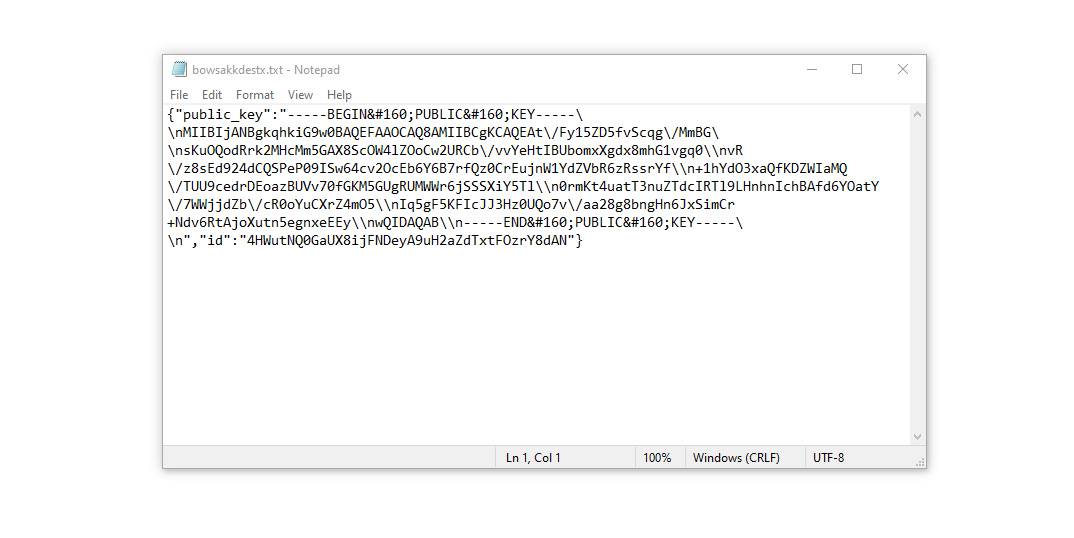
After all these changes, the malware doesn’t stop. Variants of STOP/DJVU tend to deploy Vidar password-stealing Trojan on compromised systems. This threat has an extensive list of capabilities, including:
- Gathering sensitive data by running malicious software on the victim’s computer.
- Acquiring unauthorized login credentials of Steam, Telegram, and Skype accounts.
- Manipulating and viewing files on the victim’s computer without their knowledge.
- Stealing cryptocurrency wallets from the victim’s system.
- Granting the hackers remote control over the victim’s computer for various malicious activities.
- Extracting sensitive information such as browser cookies, saved passwords, and browsing history.
The cryptography algorithm in STOP/Djvu ransomware is AES-256. So, once your data is encrypted with an online decryption key, the chances to get your files back are quite low. Thing is, online key is unique for each victim, and picking it will take exceptionally big amount of time.
Retrieving the online decryption key in any other way is also nearly impossible. It is kept on a remote server controlled by the criminals who spread the Popn malware. For receiving decrypting code the payment should be $980. To see the payment details, the victims should contact the fraudsters by email ([email protected]).
The message by the ransomware states the following information:
ATTENTION! Don't worry, you can return all your files! All your files like photos, databases, documents and other important are encrypted with strongest encryption and unique key. The only method of recovering files is to purchase decrypt tool and unique key for you. This software will decrypt all your encrypted files. What guarantees you have? You can send one of your encrypted file from your PC and we decrypt it for free. But we can decrypt only 1 file for free. File must not contain valuable information. You can get and look video overview decrypt tool: https://we.tl/t-WJa63R98Ku Price of private key and decrypt software is $980. Discount 50% available if you contact us first 72 hours, that's price for you is $490. Please note that you'll never restore your data without payment. Check your e-mail "Spam" or "Junk" folder if you don't get answer more than 6 hours. To get this software you need write on our e-mail: [email protected] Reserve e-mail address to contact us: [email protected] Your personal ID: XXXXXXXXXXXXXXXXXXXXXXXXXXXXXXX
Do not pay the ransom!
Please, try to use the available backups, or Decrypter tool
_readme.txt file also indicates that the system owner must get in touch with the hackers’ representatives within 72 hours starting from the moment of files were encrypted. If user contacts hackers within 72 hours, hackers grant a 50% off. Thus the ransom amount will be minimized down to $490. Yet, stay away from paying the ransom! I strongly recommend that you do not contact these swindlers and do not pay. A highly effective solution to regain the lost data is just using the available backups, or using Decrypter tool from Emsisoft.
The distinctiveness of all such viruses is the utilization a similar set of actions for generating the unique decryption key to recover the ciphered data. Thus, unless the ransomware is still under the stage of development or exhibits some hard-to-track flaws, manual data recovery is a thing you can’t perform. The exclusive resolution to prevent the loss of your valuable data is to regularly make backups of your important files.
Note that even if you do preserve such backups regularly, they must be located into a specific location without loitering, not being connected to your main workstation. For instance, the backup may be kept on the USB flash drive or some optional external hard drive storage. Alternatively, you may refer to the help of online (cloud) information storage.
It goes without saying, when you maintain your backup on your common device, it may be similarly ciphered as well as other data. For this reason, placing the backup on your disk is surely not a wise idea.
How I was infected?
Ransomware has a various methods to built into your system. But it doesn’t really matter what way had place in your case.

Ransomware attack following a successful phishing attempt.
- Utilizing online free hosting resources to distribute the virus discreetly.
- Disguising the virus installer within other apps, particularly utilities offered as freeware or shareware.
- Propagation through spam emails containing dubious links leading to the virus installation.
- Downloading pirated software from illegal peer-to-peer (P2P) resources, which may include hidden malware.
There were cases when the Popn virus hiding as some legitimate procedure, for example, the messages requesting to start a browser update or a vastly needed codec for online media playback. This is typically the way how some online frauds aim to force you into install the ransomware manually, by actually making you directly involve in this process.
Surely, the bogus update alert will not indicate that you are installing the threat. This process will be hidden under some alert stating that you must install an urgent security update or some questionable program whatsoever.
Of course, the cracked apps represent the damage too. Using P2P is both illegal and may end up with the injection of serious malware, including the Popn ransomware.
To sum up, what can you do to prevent the injection of the ransomware into your system? Even though there is no 100% guarantee to stop your PC from getting damaged, there are certain tips I want to give you to shield the Popn penetration. You must be cautious while setting up free software today.
Make sure you always read what the installer offers aside from the main free program. Keep away from launching suspicious email attachments. Do not open files from the unknown senders. Naturally, your current anti-malware program must always be updated.
The malware does not show itself openly. It will not be mentioned in the list of your available programs. However, it will be masked under some malevolent process running consistently in the background, starting from the moment when you start your computer.
How To Remove Ransomware?
Furthermore, the Djvu ransomware has also set up the Vidar Stealer on PC to take account credentials, cryptocurrency wallets, desktop files, and more.
Remove Popn Virus with Gridinsoft Anti-Malware
We have also been using this software on our systems ever since, and it has always been successful in detecting viruses. It has blocked the most common Ransomware as shown from our tests with the software, and we assure you that it can remove Popn Virus as well as other malware hiding on your computer.

To use Gridinsoft for remove malicious threats, follow the steps below:
1. Begin by downloading Gridinsoft Anti-Malware, accessible via the blue button below or directly from the official website gridinsoft.com.
2.Once the Gridinsoft setup file (setup-gridinsoft-fix.exe) is downloaded, execute it by clicking on the file.

3.Follow the installation setup wizard's instructions diligently.

4. Access the "Scan Tab" on the application's start screen and launch a comprehensive "Full Scan" to examine your entire computer. This inclusive scan encompasses the memory, startup items, the registry, services, drivers, and all files, ensuring that it detects malware hidden in all possible locations.

Be patient, as the scan duration depends on the number of files and your computer's hardware capabilities. Use this time to relax or attend to other tasks.
5. Upon completion, Anti-Malware will present a detailed report containing all the detected malicious items and threats on your PC.

6. Select all the identified items from the report and confidently click the "Clean Now" button. This action will safely remove the malicious files from your computer, transferring them to the secure quarantine zone of the anti-malware program to prevent any further harmful actions.

8. If prompted, restart your computer to finalize the full system scan procedure. This step is crucial to ensure thorough removal of any remaining threats. After the restart, Gridinsoft Anti-Malware will open and display a message confirming the completion of the scan.
Remember Gridinsoft offers a 6-day free trial. This means you can take advantage of the trial period at no cost to experience the full benefits of the software and prevent any future malware infections on your system. Embrace this opportunity to fortify your computer's security without any financial commitment.
Trojan Killer for “Popn Virus” removal on locked PC
In situations where it becomes impossible to download antivirus applications directly onto the infected computer due to malware blocking access to websites, an alternative solution is to utilize the Trojan Killer application.

There is a really little number of security tools that are able to be set up on the USB drives, and antiviruses that can do so in most cases require to obtain quite an expensive license. For this instance, I can recommend you to use another solution of GridinSoft - Trojan Killer Portable. It has a 14-days cost-free trial mode that offers the entire features of the paid version. This term will definitely be 100% enough to wipe malware out.
Trojan Killer is a valuable tool in your cybersecurity arsenal, helping you to effectively remove malware from infected computers. Now, we will walk you through the process of using Trojan Killer from a USB flash drive to scan and remove malware on an infected PC. Remember, always obtain permission to scan and remove malware from a computer that you do not own.
Step 1: Download & Install Trojan Killer on a Clean Computer:
1. Go to the official GridinSoft website (gridinsoft.com) and download Trojan Killer to a computer that is not infected.

2. Insert a USB flash drive into this computer.
3. Install Trojan Killer to the "removable drive" following the on-screen instructions.

4. Once the installation is complete, launch Trojan Killer.
Step 2: Update Signature Databases:
5. After launching Trojan Killer, ensure that your computer is connected to the Internet.
6. Click "Update" icon to download the latest signature databases, which will ensure the tool can detect the most recent threats.

Step 3: Scan the Infected PC:
7. Safely eject the USB flash drive from the clean computer.
8. Boot the infected computer to the Safe Mode.
9. Insert the USB flash drive.
10. Run tk.exe
11. Once the program is open, click on "Full Scan" to begin the malware scanning process.

Step 4: Remove Found Threats:
12. After the scan is complete, Trojan Killer will display a list of detected threats.

13. Click on "Cure PC!" to remove the identified malware from the infected PC.
14. Follow any additional on-screen prompts to complete the removal process.

Step 5: Restart Your Computer:
15. Once the threats are removed, click on "Restart PC" to reboot your computer.
16. Remove the USB flash drive from the infected computer.
Congratulations on effectively removing Popn Virus and the concealed threats from your computer! You can now have peace of mind, knowing that they won't resurface again. Thanks to Gridinsoft's capabilities and commitment to cybersecurity, your system is now protected.
How To Decrypt .popn Files?
How to restore big files?
Try deleting .popn extension on a few big files and opening them. This malware has issues with large files encryption. Either the virus accessed and did not encode the file, or it bugged and did not add the filemarker. If you have files that are very large (2GB+), the latter is most likely. Please, let me know in comments if that will work for you.
The newest extensions released around the end of August 2019 after the criminals made changes. This includes Poaz, Wspn, Wsaz etc.
As a outcome of the alterations made by the criminals, STOPDecrypter is no longer backed. It has been replaced with the Emsisoft Decryptor for STOP Djvu Ransomware developed by Emsisoft.
You can download free decryption tool here: Decryptor for STOP Djvu.
Download and run decryption tool.
Start downloading the decryption tool.
Make sure to launch the decryption utility as an administrator. You need to agree with the license terms that will come up. For this purpose, click on the “Yes” button:

As soon as you accept the license terms, the main decryptor user interface comes up:

Select folders for decryption.
Based on the default configurations, the decryptor will by default choose the accessible directories in order to unlock the currently reachable drives (the connected ones), including the network drives. Additional (optional) locations can be selected with the assistance of the “Add” button.
Decryptors usually propose several options depending on the specific malware family. The present possible options are displayed in the Options tab and can be enabled or disabled there. You may find a comprehensive list of the currently active Options below.
Click on the “Decrypt” button.
As soon as you add all the desired locations for decryption into the list, click on the “Decrypt” button in order to initiate the decryption procedure.
Note that the main screen may turn you to a status view, letting you know of the active process and the decryption statistics of your data:

The decryptor will notify you as soon as the decryption procedure is completed. If you need the report for your personal papers, you can save it by choosing the “Save log” button. Note that it is also possible to copy it directly to your clipboard and to paste it into emails or messages here if you need to do so.
The Emsisoft Decryptor might display different messages after a failed attempt to restore your files:
✓ Error: Unable to decrypt file with ID: [your ID]
✓ No key for New Variant online ID: [your ID]
Notice: this ID appears to be an online ID, decryption is impossible
✓ Result: No key for new variant offline ID: [example ID]
This ID appears be an offline ID. Decryption may be possible in the future.
It can take a few weeks or months until the decryption key gets found and uploaded to the decryptor. Please follow updates regarding the decryptable DJVU versions here.
✓ Remote name could not be resolved
How to Restore .popn Files?
In some case ransomware is not doom for your files…
The Popn ransomware encryption mechanism feature is next: it encrypts every file byte-by-byte, then saves a duplicate, deleting (not overriding!) the original file. Hence, the data of the file location on the disk drive is lost, but the original file is not deleted from the drive. The cell, or the sector where this file was stored, can still hold this file, but it is not present in the file system and can be replaced by data that has been loaded to this disk after the removal. Hence, it is possible to restore your files using special software.
Anyway, after realizing it was an online algorithm, it is impossible to retrieve my encrypted files. I also had my backup drive plugged in at the time of the virus, and this was also infected, or so I thought. Every folder within my backup drive had been infected and was encrypted. However, despite losing some important files, I retrieved almost 80% of my 2TB storage.
When I started going through the folders, I noticed the readme.txt ransom note in every folder. I opened some of the folders and found that all files that were not in a subfolder within that folder had been encrypted. However, I found a flaw and glimmer of hope when I went into the subfolders in other folders and found that these files had not been encrypted. Every folder within my c and d drives, including subfolders, had been encrypted, but this was not the case with the backup drive. Having subfolders created within a folder has saved 80% of my data.
As I said, I believe this to be only a small loophole on a backup drive. I’ve since found a further 10 % of my data on another hard drive on a different pc. So my advice is if you use a backup drive, create subfolders. I was lucky, I guess. But I was also unlucky that the virus hit as I was transferring some files from my backup.
Hopefully, this can help some other people in my situation.
Jamie NewlandRecovering your files with PhotoRec
PhotoRec is an free program, which is originally created for data recovery from damaged disks, or for data recovery in case if they are unintentionally deleted. However, with time flow, this program adopted the ability to retrieve the files of 400 different formats. Hence, it can be used for file restoration after the Popn attack.
First, you need to download this app. It is 100% free, but the developer notifies that there is no warranty that your files will be recovered. PhotoRec is distributed together with another utility of the same developer – TestDisk. The downloaded archive will bear TestDisk name, but don’t worry. PhotoRec files are right inside.
To open PhotoRec, you need to find and open “qphotorec_win.exe” file. No setup is required – the program has all the files it need within the archive, hence, you can fit it on your USB drive, and help your friends/parents/anyone who has been attacked by Popn ransomware.
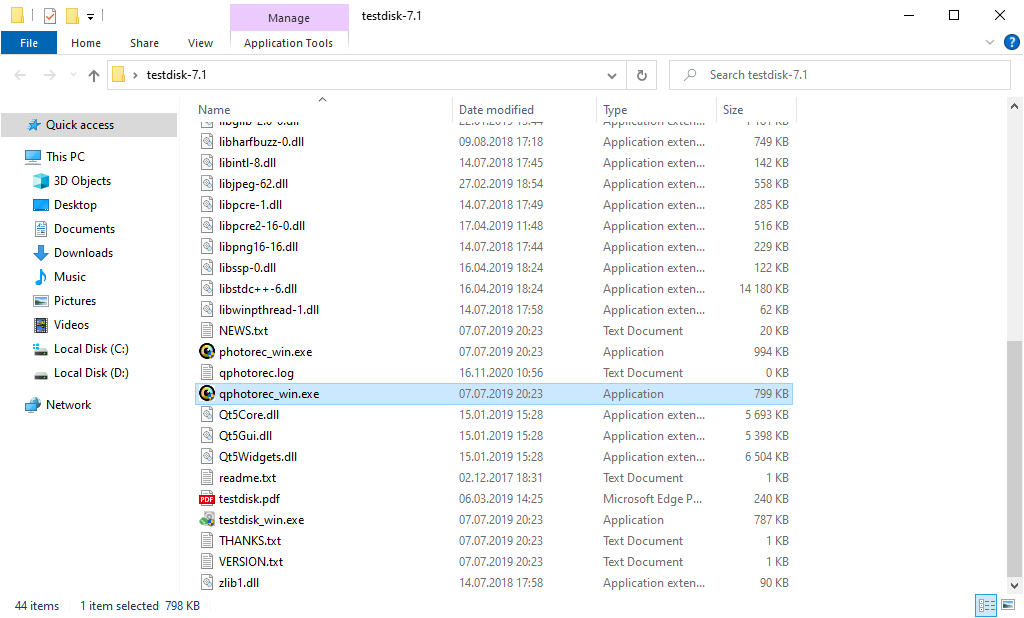
After the start, you will see the screen showing you the full list of your disk spaces. However, this details are presumably useless, because the required menu is placed a bit higher. Click this menu, then choose the disk which was attacked by ransomware.
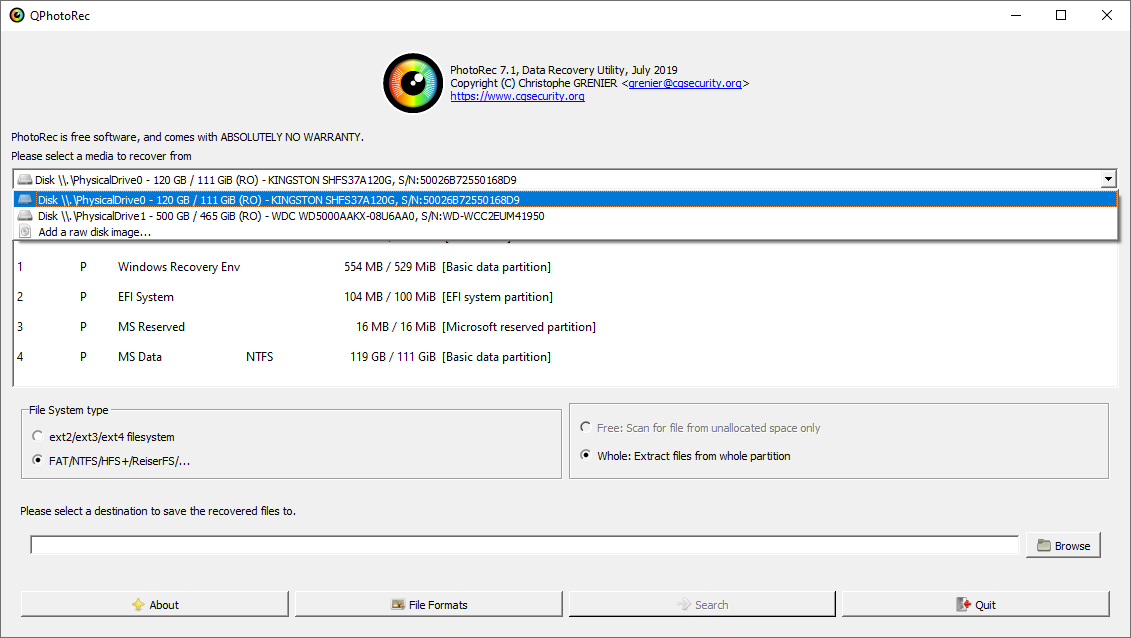
After picking the disk, you need to pick the destination folder for the recovered files. This menu is located at the lower part of the PhotoRec window. The best choice is to export them on USB drive or any other type of removable disk.
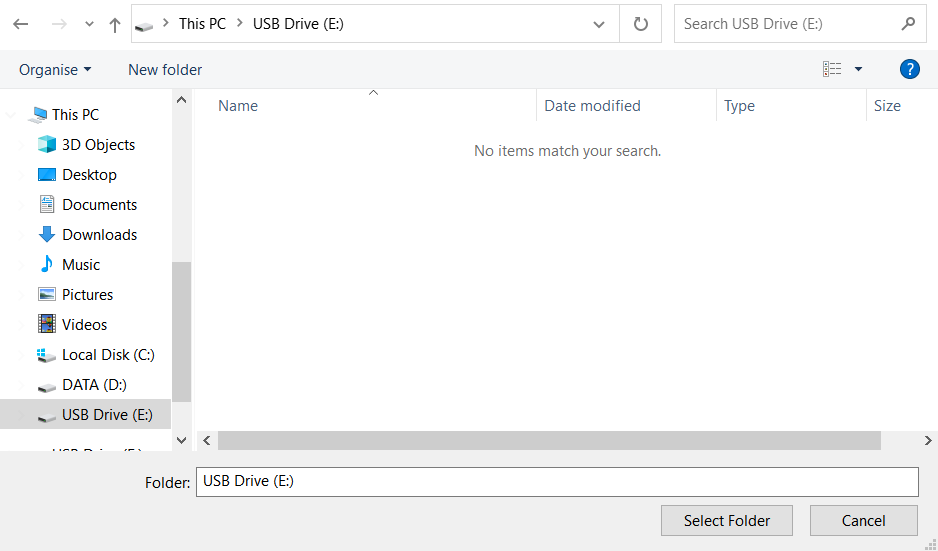
Then, you need to indicate the file formats. This setting is located at the bottom, too. As it was mentioned, PhotoRec can restore the files of about 400 different formats.
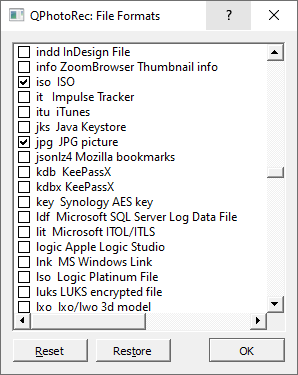
Finally, you can start files restoration by pressing the “Search” button. You will view the screen where the outcomes of the scan and recovery are shown.
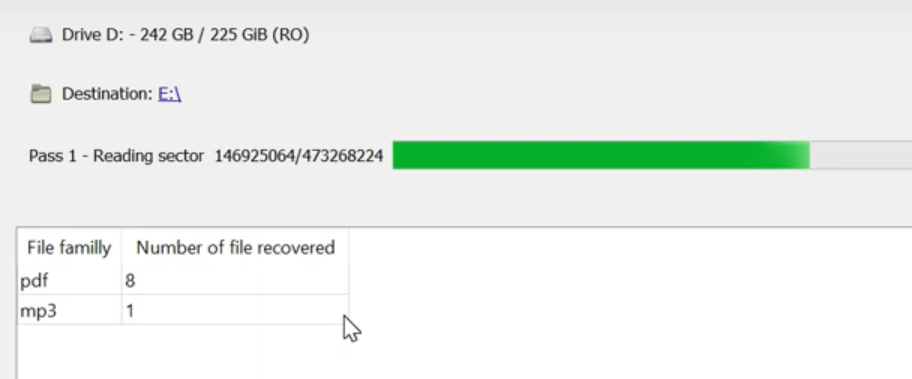
Recovery of Encrypted Files
Frequently Asked Questions
No way. These files are encrypted by ransomware. The contents of encrypted files are not available until they are decrypted.
If your data remained in the .popn files are very valuable, then most likely you made a backup copy.
If not, then you can try to restore them through the system function – Restore Point.
All other methods will require patience.
Of course not. Your encrypted files do not pose a threat to the computer. What happened has already happened.
You need GridinSoft Anti-Malware to remove active system infections. The virus that encrypted your files is most likely still active and periodically runs a test for the ability to encrypt even more files. Also, these viruses install keyloggers and backdoors for further malicious actions (for example, theft of passwords, credit cards) often.
In this situation, you need to prepare the memory stick with a pre-installed Trojan Killer.
Have patience. You are infected with the new version of STOP/DJVU ransomware, and decryption keys have not yet been released. Follow the news on our website.
We will keep you posted on when new keys or new decryption programs appear.
The Popn ransomware encrypts only the first 150KB of files. So MP3 files are rather large, some media players (Winamp for example) may be able to play the files, but – the first 3-5 seconds (the encrypted portion) will be missing.
You can try to find a copy of an original file that was encrypted:
- Files you downloaded from the Internet that were encrypted and you can download again to get the original.
- Pictures that you shared with family and friends that they can just send back to you.
- Photos that you uploaded on social media or cloud services like Carbonite, OneDrive, iDrive, Google Drive, etc
- Attachments in emails you sent or received and saved.
- Files on an older computer, flash drive, external drive, camera memory card, or iPhone where you transferred data to the infected computer.
If the guide doesn’t help you to remove infection, please download the GridinSoft Anti-Malware that I recommended. Do not forget to share your experience in solving the problem. Please leave a comment here! This can help other victims to understand they are not alone. And together we will find ways to deal with this issue.
I need your help to share this article.
It is your turn to help other people. I have written this guide to help people like you. You can use buttons below to share this on your favorite social media Facebook, Twitter, or Reddit.
Brendan SmithHow To Restore & Decrypt .POPN Files?
Name: POPN Ransomware
Description: The POPN Virus belongs to the STOP/DJVU family of ransomware infections. This malicious software encrypts various file types, including videos, photos, and documents, which become identifiable by a distinct popn extension. As a result, the affected files become inaccessible and unusable. Subsequently, the POPN ransomware demands a ransom payment in Bitcoin from its victims, ranging from $490 to $980.
Operating System: Windows
Application Category: Virus
User Review
( votes)References
![]() German
German ![]() Japanese
Japanese ![]() Spanish
Spanish ![]() Portuguese (Brazil)
Portuguese (Brazil) ![]() French
French ![]() Turkish
Turkish ![]() Chinese (Traditional)
Chinese (Traditional) ![]() Korean
Korean ![]() Indonesian
Indonesian


